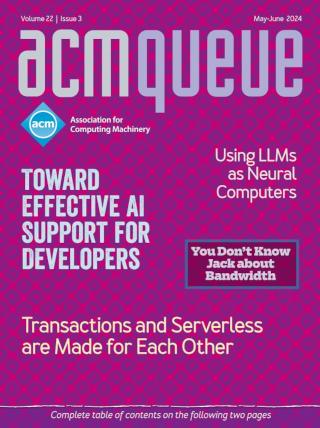
A Primer on Provenance:
Better understanding of data requires tracking its history and context.
Assessing the quality or validity of a piece of data is not usually done in isolation. You typically examine the context in which the data appears and try to determine its original sources or review the process through which it was created. This is not so straightforward when dealing with digital data, however: the result of a computation might have been derived from numerous sources and by applying complex successive transformations, possibly over long periods of time.
The NSA and Snowden: Securing the All-Seeing Eye:
How good security at the NSA could have stopped him
Edward Snowden, while an NSA (National Security Agency) contractor at Booz Allen Hamilton in Hawaii, copied up to 1.7 million top-secret and above documents, smuggling copies on a thumb drive out of the secure facility in which he worked, and later released many to the press. This has altered the relationship of the U.S. government with the American people, as well as with other countries. This article examines the computer security aspects of how the NSA could have prevented this, perhaps the most damaging breach of secrets in U.S. history. The accompanying sidebar looks at the Constitutional, legal, and moral issues.
Don’t Settle for Eventual Consistency:
Stronger properties for low-latency geo-replicated storage
Geo-replicated storage provides copies of the same data at multiple, geographically distinct locations. Facebook, for example, geo-replicates its data (profiles, friends lists, likes, etc.) to data centers on the east and west coasts of the United States, and in Europe. In each data center, a tier of separate Web servers accepts browser requests and then handles those requests by reading and writing data from the storage system.
Please Put OpenSSL Out of Its Misery:
OpenSSL must die, for it will never get any better.
The OpenSSL software package is around 300,000 lines of code, which means there are probably around 299 bugs still there, now that the Heartbleed bug which allowed pretty much anybody to retrieve internal state to which they should normally not have access has been fixed.





